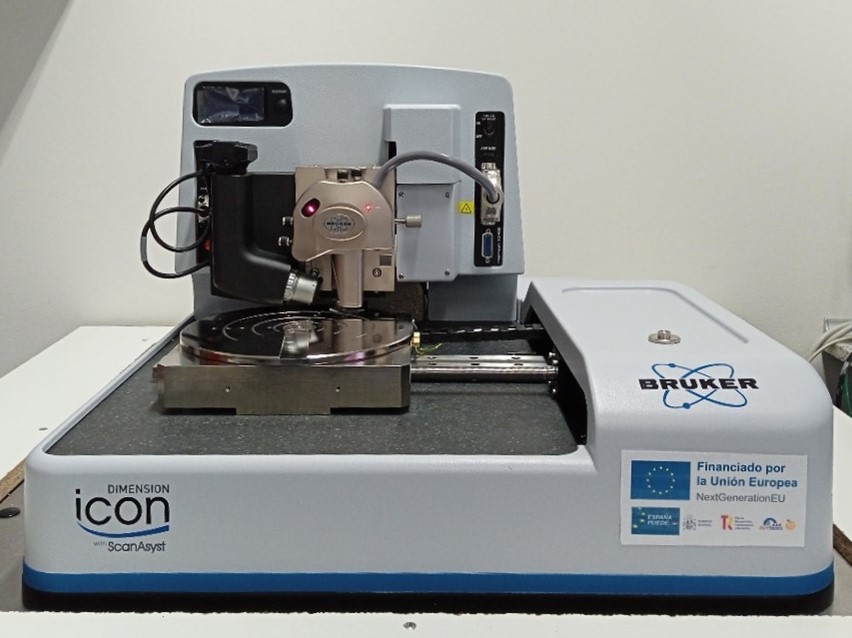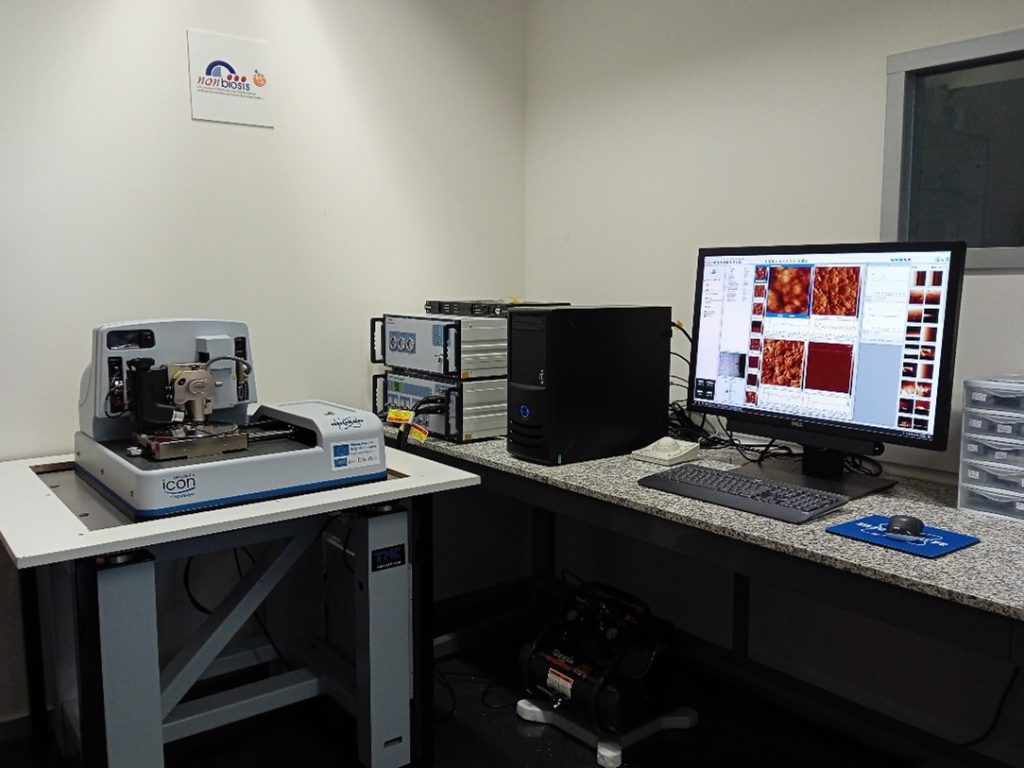


Description:
The Dimension Icon-PT features a microscopy method that allows obtaining the electrical properties of the surface of a material in air or liquid. Additionally, it can determine the mechanical and viscoelastic properties of these surfaces and qualitatively and quantitatively study their morphology and topography through images and 3D roughness parameters. The measurement range of this equipment reaches tenths of nanometers in height and hundreds of nanometers in spacing.
Technical Specifications:
The Dimension Icon-PT AFM allows the use of all three modes of Atomic Force Microscopy operation: contact, semi-contact (tapping), and non-contact. These modes range from more to less invasive, with the contact mode being able to modify the surface of white samples more easily. This AFM features the latest version provided by the manufacturer (Bruker) for controllers, the NanoScope 6. Additionally, it incorporates a new operating mode patented by the manufacturer (Bruker), the PeakForce® method, which is even less invasive than the non-contact mode and achieves better resolutions in almost all types of measurements. It also includes the ScanAsyst method to facilitate measurements and improve the acquisition of topographic images. This microscope allows for electrical measurements on the surface, using the DI-ICON-PFKPFM PeakForce KPFM® module, which provides the electrostatic potential in air of a surface and its corresponding work function, and the DI-DM-TUNAV-50 Tunneling/Conductive AFM (TUNA/CAFM) (to perform measurements of electrical conductivity and study the dielectric response of different materials). Finally, this AFM incorporates a special liquid measurement holder, which can obtain topographical and mechanical properties of different systems with great application in the field of biomedicine.
Applications:
The services that can be provided with this AFM include electrical, mechanical, and topographical measurements, in air and liquid, of different materials, using different modes of operation: contact, semi-contact or tapping, non-contact, and PeakForce®, achieving nanometric resolutions. The PeakForce KPFM® method allows measuring the electrostatic potential of the surface in air and the work function of various materials, from conductive metals to piezoelectric polymers. The TUNA/CAFM method allows measuring the electrical response of various materials to the current provided to the probe by the equipment. Mechanical and viscoelastic properties in air and liquid are quantified using the QNM (Quantitative NanoMechanical) method, which provides magnitudes such as Young’s modulus, adhesion, or indentation. Lastly, topographical and mechanical measurements can also be made on the surface of biological materials, such as extracellular components, proteins, or microorganisms. This latter application is of great interest to the field of microbiology and biomedicine.
